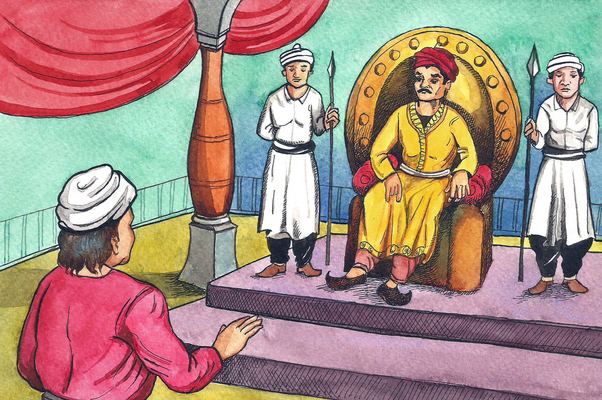 | ||
Brahmadeya (given to Brahmin) was tax free land gift either in form of single plot or whole villages donated to Brahmans in the early medieval India. It was initially practiced by the ruling dynasties and was soon followed up by the chiefs, merchants, feudatories, etc. Brahmadeya was devised by the Brahmanical texts as the surest mean to achieve merit and destroy sin.
Brahmadeya helped the expansion of agrarian economy and the emergence of urban settlements. It also helped the Kings to gain the ideological support for their rule. Brahamdeya sometimes also resulted in alienation of peasant land rights and created social tension and clash leading even to death between peasant, Brahmans and the Kings.
Overview
Brahmadeya represented the grant of land either in a single plot or whole villages donated to Brahamans by making them land-owners or land-controllers. It was also given to more than one Brahmana (ekabhoga), to several Brahmana families (ganabhogam) which is estimated to be from few to several hundreds or even more than thousands, particularly in the South India. The gift of land were mostly selected around the irrigation facilities such as tanks or lakes and were supposed to be operable to fulfill the needs of the donees. In the absence of facility, new means of irrigation system were created near the brahmadeyas. The Kings and feudatories were to lost their right over donated lands and could not take it back even in the absence of heir. In the absence of heir, brahamdeya was transferred to some other eligible person of the same caste. Though, mostly lands, other objects such as food, grains, paddy, gold, money, cow, oxen, ploughshare, etc. were also given away as a gift.
The historical evidence of the practice of donating lands in return of spiritual favour is traced back to 3rd-4th century A.D. in South India. The earliest royal land grant inscription that mentions brahmadeya is discovered from the 3rd century A.D. of the reign of Brihatphala yana King Jayavarman. Brahmadeya soon developed into a systematic attempt to avail subsistence to Brahmans and a common practice onward 4th century A.D. The registration of donated land that included cultivable land, garden, residential plot were recommended by the Smrities and Puranas of the Post-Gupta period and were recorded on the copper plates. The tradition of land grants through the history of practice took the shape of a legal form governed by the law book called, Dharmaśāstra. The Anushasana Parva, a part of the great epic Mahabharata has a complete chapter dedicated to Bhumi-dana-prasamsa, commending the gifts of land.
Bramadeyas, however helped to bring virgin land under cultivation and to integrate the existing rural settlement into a new economic order, dominated by the Brahmans proprietor. They were exempted from various land taxes and dues either entirely or partially such as in the initial states of settlement. The taxes from the donated villages were assigned to Brahmana donees. Brahamdeyas also helped the ruling families as they did gain the ideological support for their political power. It is said to be a chief characteristic of the Indian feudalism.
The donation of land sometimes represented more than just the transfer of land rights. At many instances, human resources such as peasants, artisans and others along with revenues and economic resources were also transferred to the donees. There are several inscriptional evidence of conflicts between peasants, Brahmanas, and doners arising out of alienation of rights. Among other conflicting issues, right over drawing water was the most sensitive issue. An inscription dated back to 1080 A.D. belonging to the Hasan Taluk mentions a water dispute between a Brahman and a farmer's family. Another inscription from the same taluk of 1230 A.D. evidences the death of two farmers over land right issue. Peasants were sometimes forced to agree conversion of their land into brahamdeya by denying water to them. In the brahmadeya villages, villagers were landless labours who were paid a portion of crop they helped to cultivate.
